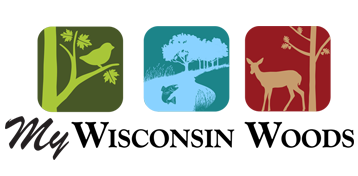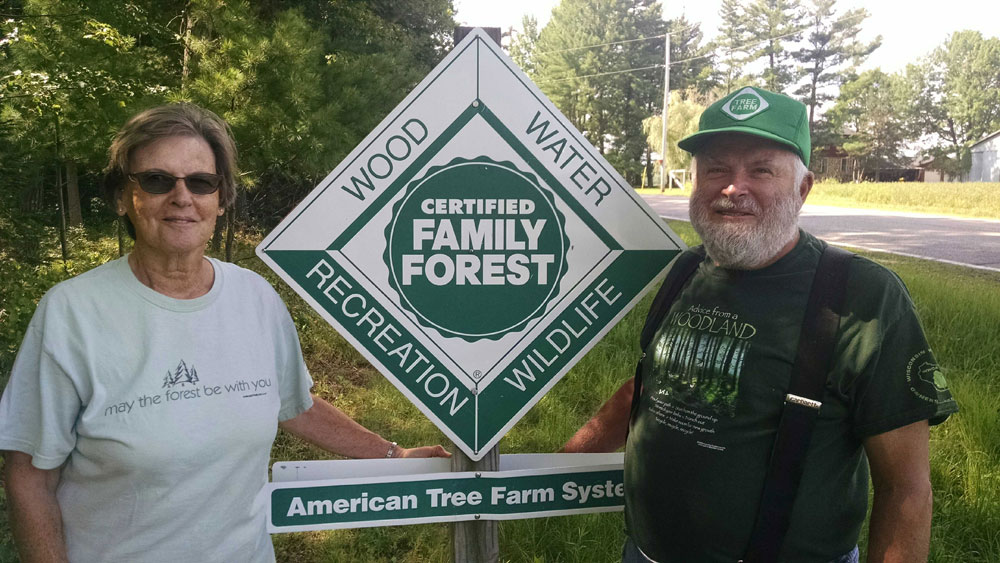
Ask the Expert: Should I Seek Forest Certification?
Nearly everyone and everything – from tax accountants to organic produce – can be certified, and the same is true of family forest owners. Certification programs for these landowners are in fact decades-old, but that doesn’t mean today’s owners are familiar with them. That’s why My Wisconsin Woods recently talked with Carol Nielsen about forest certification, including the main routes to it in Wisconsin, the benefits, and who is eligible.
Nielsen, a retired Wisconsin Department of Natural Resources (DNR) forester, is vice-chair of the Wisconsin Tree Farm Committee, one of the state’s chief certifying bodies for small woodland owners.
MWW: Let’s start with the basics: What is forest certification and how do family woodland owners become certified?
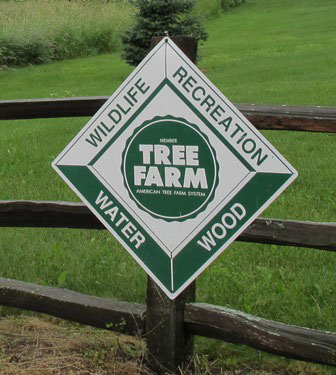
Nielsen: Forest certification essentially says that a woodland owner is doing right by his or her land – managing it for health and long-term sustainability. In Wisconsin, small private landowners have two primary paths open to them. They can get certified through the Wisconsin DNR’s Managed Forest Law (MFL) program. Or they can seek American Tree Farm System (ATFS) certification through the Wisconsin ATFS branch, known as the Wisconsin Tree Farm Committee (WTFC).
MWW: The rules on certification through MFL have recently changed, is that right?
Nielsen: Yes. Starting in 2005, all lands enrolled in MFL were dual-certified through ATFS and the Forest Stewardship Council (FSC). So, unless landowners in MFL opted out, they were automatically certified through these bodies. The problem was that not everyone knew what it meant to be certified – or even that they were certified in the first place.
Now with the 2016 rules written for MFL, landowners enrolled in the program must ask to be certified – they need to opt in. So, hopefully folks who are getting certified from here on out will have a better understanding of what forest certification is and how it affects them.
MWW: What about woodland owners who are not part of MFL?
Nielsen: People who don’t have land in MFL can become ATFS-certified through the WTFC. Both programs follow the same certification standards; the main difference between MFL and WTFC is that the MFL participants are monitored by the DNR foresters, while the WTFC uses Certified Tree Farm Inspectors, who monitor tree farms once every five years.
MWW: Are there other differences?
Nielsen: Yes, program audits or assessments are also handled differently. In the MFL program, the DNR organizes and hires auditors to do annual surveillance audits and re-certification audits every three years. For those certified through the WTFC, it’s the ATFS that organizes and hires auditors to review the certification program in the ATFS’s three regions. Wisconsin is in the North Central region and is visited about every five years as part of the regional assessments.
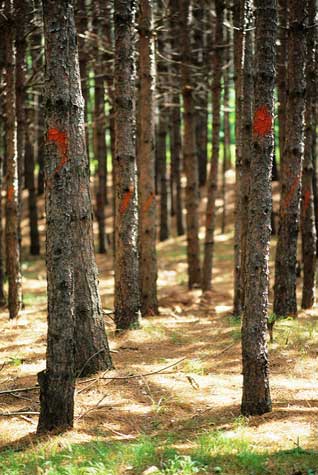
And, of course, auditing or assessments are part of forest certification – they’re designed to make sure that the programs and participants are actually doing what they said they were going to do.
MWW: What are the benefits of becoming certified?
Nielsen: Our hope and our dream is that when Wisconsin landowners go to sell their certified timber, they’ll get more money for it. In reality, though, we find that certification is what allows them to sell their timber at all. That’s because industry is looking for third-party certified wood, but isn’t necessarily able to pay more for it.
Forest certification is also an affirmation that you’re doing things right. What the Tree Farm Committee does in Wisconsin is recognize the Tree Farmer of the Year — the people who are doing it right.
This could be anyone certified to the ATFS standards: someone enrolled in MFL or someone certified through the WTFC. If their inspector submits a nomination, we’ll look at them. Then, if they win, the annual tree farm field day is held on their property the following year. It’s a great way to share what they’re doing.
MWW: Do you need to be an actual tree farmer to become certified under the American Tree Farm System?
Nielsen: No, any woodland owner who wants to manage sustainably can become certified – the trees don’t have to be in rows like crops. We look at all the forest, whether it’s “afforested” land, which means you planted a fallow field; or reforestation, which means you’ve got trees growing on a natural site or natural regeneration. So, any arrangement of trees. Certification just means you’re interested in sustainably managing the woods you have.
MWW: Are people required to harvest their trees as part of forest certification?
Nielsen: A tree farmer by definition harvests trees, and certification says that in managing your forest for timber, you are managing it correctly. So, you must do something to become a certified tree farmer. If you haven’t done anything, there’s nothing to evaluate.
The other point is that if you’re never planning to harvest trees, there’s no reason to become certified. Because the main benefit of certification is the recognition that your wood – when you do cut it – was grown sustainably. Of course, you can do lots of other things with your land. Not all of it has to be managed intensively. But when you do manage it, certification says it’s being done appropriately.
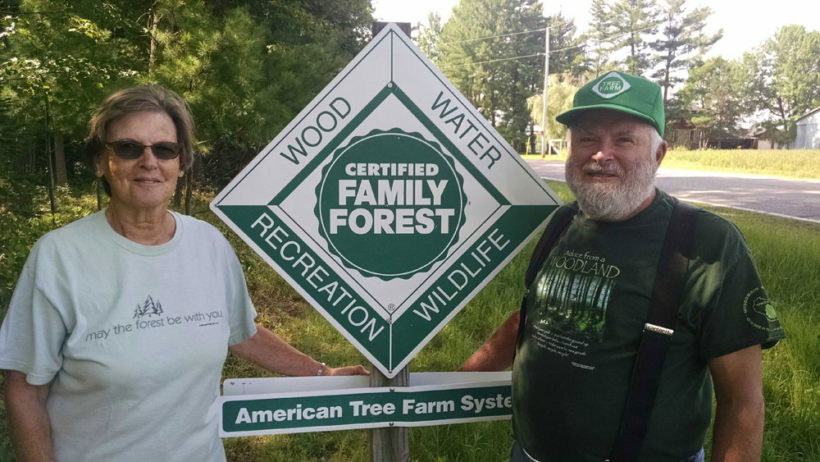
MWW: Does it cost money to become certified?
Nielsen: No, certification through MFL or the ATFC doesn’t cost anything, that’s the beauty of it. In the MFL program, the state currently bears the cost because it’s investing in the future. With the WTFC, ATFS will be charging the committee a fee of $10 per certified tree farmer beginning in 2018. We’ve decided not to pass that fee onto the landowner; we’re hoping to raise the funds to pay it. So, right now there is no cost.
But even $10 per farmer is very low. The other way that a small, private landowner can become certified is directly through the Forest Stewardship Council (FSC). But then, the landowner bears the cost of the certification. And that could mean thousands of dollars just to pay for the audits.
MWW: So, how do people get started?
Nielsen: You need to have a forest management plan first, and there are many ways to get one written: through Natural Resources Conservation Service EQIP, WFLGP, etc. You can also start your plan through MyLandPlan.org on the ATFS website. It’s a way to begin thinking about what you want to do on your land, what’s important to you and your family, and your goals for your property. This information can then be passed to the forester who is working on your plan. It helps him or her understand what you’re thinking and what you’re interested in.
To learn more, I encourage people to visit the websites of DNR’s Managed Forest Law program, the Wisconsin Tree Farm Committee, and the American Tree Farm System.
